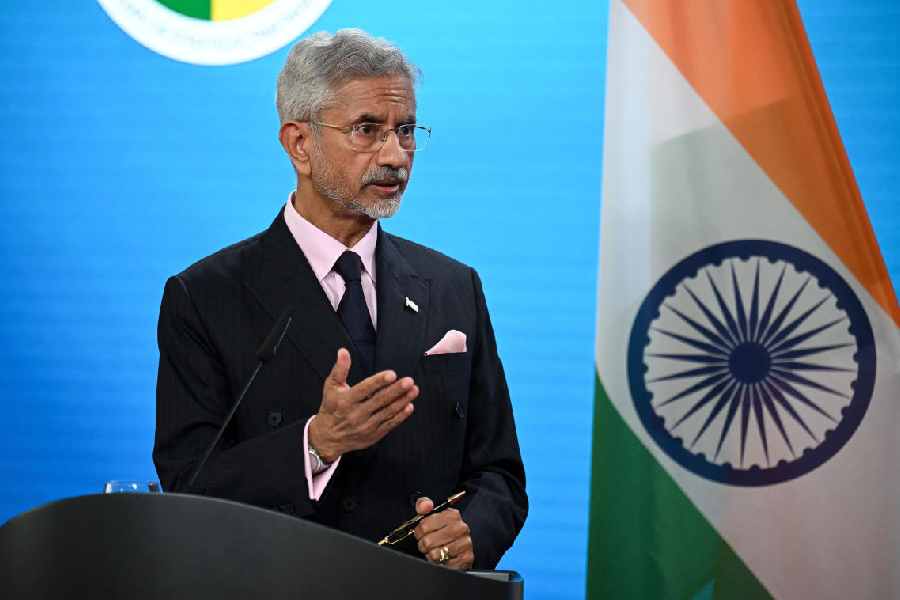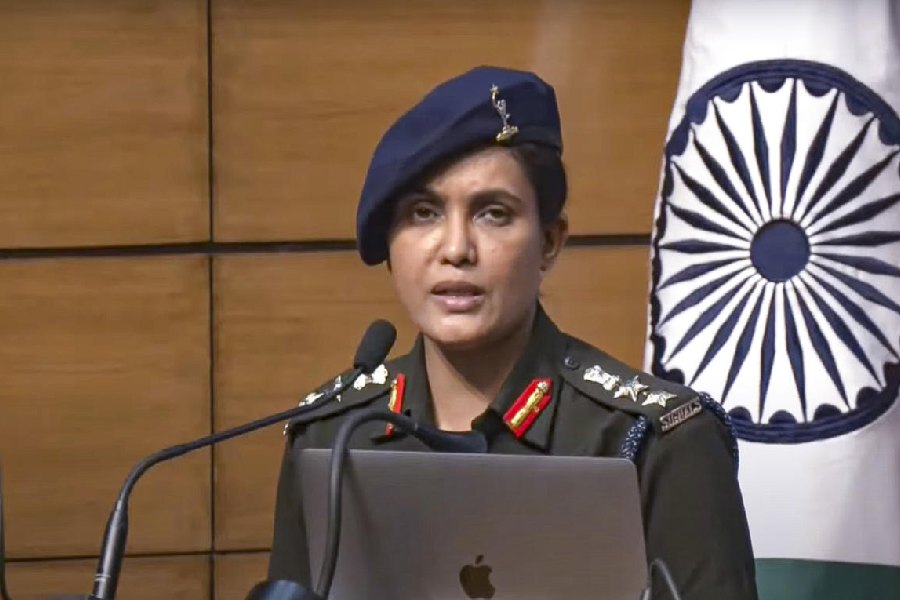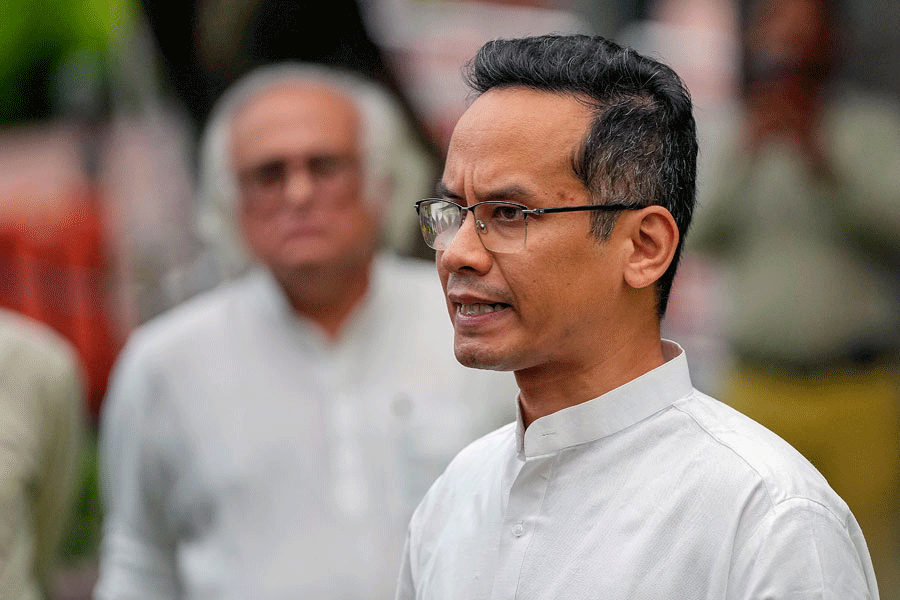 |
| A rocket carrying Edusat being launched at Sriharikota on Monday. (Reuters) |
Sriharikota, Sept. 20: Nearly two years after the Indian Space Research Organisation conceived the ?Indian Satellite in Education (Edusat)? programme to launch a satellite by the same name dedicated to educational services, its efforts have borne fruit.
The Geosynchronous Satellite Launch Vehicle GSLV-F01 today launched the Edusat satellite into the intended geostationary transfer orbit nearly 18 minutes after the space vehicle blasted off from the launch pad at the Satish Dhawan Space Centre here at 4.01 pm. The weather had cleared after last night?s rain, helping to make the launch a success.
With today?s launch giving the Edusat programme a shot in the arm, teaching could soon be a matter of beaming messages from the sky.
Isro?s heaviest and tallest launch vehicle till date, the 49 metre tall, GSLV three-stage vehicle weighing 414 tonnes, roared into the sky over the Bay of Bengal to a brilliant yellowish plume, leaving behind a thick trail of greyish-white smoke. Scientists and technocrats led by Isro chairman G. Madhavan Nair watched the lift-off from the launch control centre.
T.K.A. Nair, principal secretary to the Prime Minister, former University Grants Commission chairman Yashpal, and a number of other dignitaries, including from the Russian company which has supplied the third stage cryogenic engine for the GSLV, were present at the centre.
Madhavan Nair, who was congratulated on the successful launch by President A.P.J. Abdul Kalam, said: ?It is a proud moment for the country. My team has done it again and it is one of the most precision launches ever (from Sriharikota) by Isro.?
The Isro chairman said they had decided to launch the vehicle as scheduled ?against many odds? despite last night?s downpour and lightning. He added that the space organisation now had the technology to gauge wind conditions on the launch day.
Nair said the scientists and engineers thus ?gave us the confidence?, adding that the countdown for the launch ?was on dot? and the launch sequence implemented as planned. After the GSLV pulled through its stages to clockwork precision, it put the 1950-kg Edusat satellite at the ?initially intended orbit? ? 190 km perigee and 35,900 km apogee.
The Isro chairman said Prime Minister Manmohan Singh called up from London minutes after the launch. ?The nation is proud of Isro?s success. It is a shining example of dedicated and committed teamwork,? Singh said.
The Edusat is built around a ?standardised spacecraft bus? and will have, among others, a ?multiple spot beam antenna? to direct beams towards intended areas and a Ku-band transponder to enable satellite footprints to cover the entire country.
Nair said the satellite will revolutionise access to education. It is primarily meant to provide connectivity to school, college and higher levels of education and support non-formal adult education. The project, to be implemented in phases, is already using a Ku-band transponder on board the Insat-3B satellite, already in orbit, and is being used by select educational institutions in Karnataka and Maharashtra.
The exclusive satellite for education will address the dearth of quality teachers, the Isro chairman said. Once Edusat is commissioned in orbit, a lecture by a professor in an Indian Institute of Technology could be captured and beamed through to 100 to 200 classrooms connected through ?each beam?. Thus, all regions can be covered.
Science classes and laboratory experiments can also be thus beamed from a virtual class and the satellite used for adult literacy programmes.










